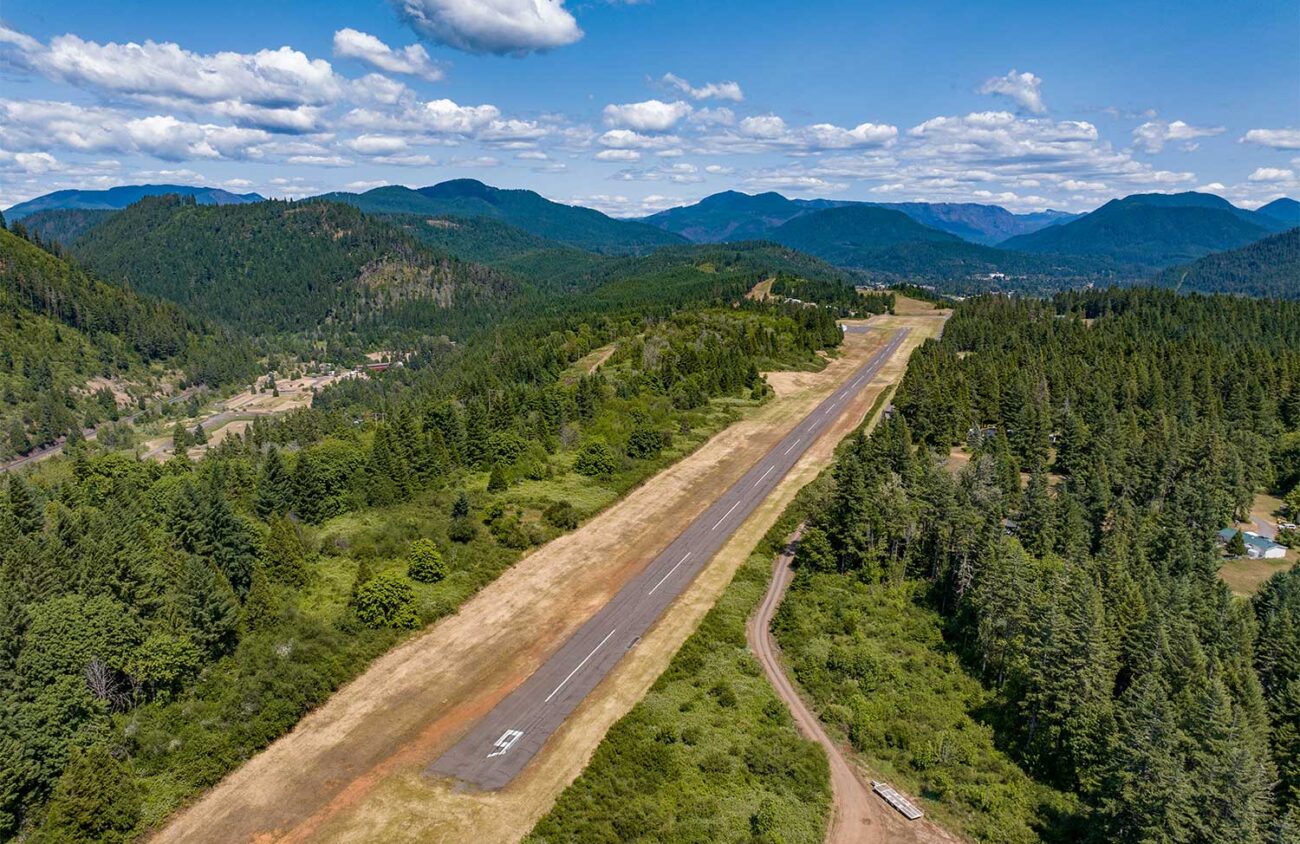Oakridge Airport, 40 miles east of Eugene, is home to drones in a big way.
Students in Lane Community College’s two-year drone program train there, and state aviation officials say the rural facility will also soon be upgraded to become the drone firefighting airport of the future.
The LCC program, more formally called Aviation Unmanned Aircraft Systems, works with the Oakridge Airport to give its students on-the-job training as part of their instruction. And during wildfire season, the Oakridge Airport is also part of firefighting efforts across the region, says the director of Oregon’s Department of Aviation.
Now ODAV wants to add firefighting drones to its emergency response system.
“It’s a dinky little airport,” says Kenji Sugahara, ODAV director, of the 3,565-foot runway with a paved width of 50 feet. But it’s “critical for fighting fires in the Cascade region.”
Oakridge City Administrator James Cleavenger really likes the firefighting drone plan. “The terrain here is so steep and inaccessible in a lot of areas that we can’t get people up there to deal with it,” he says of the forests around the town, “and we certainly can’t get fire trucks in a lot of areas. But we could easily fly drones up there.”
The drones will be dual purpose, Sugahara says.
“What we want to do is be able to, if there’s lightning strikes, send out drones for long distances and just take a look at the area where all the lightning strikes happen, so we can figure out whether traditional aviation assets need to be sent out to put that fire out.”
During times of heavy firefighting, the small airport can be packed with helicopters and other equipment, plus crews and other staff. Outside of wildfire season, Cleavenger says “it’s a tight location so it’s not super popular. There’s a hangar there now with a couple of planes in it, but not a lot.”
Sugahara notes that the airport isn’t just used by wildfire fighters or local pilots, but by Lane Community College aviation students as well.
LCC drone technology and unmanned aircraft systems instructor Solomon Singer says the Oakridge Airport is the perfect place for his students to get experience. “Drone pilots need to know airport operations. It’s actually a really critical component of the training,” he says.
Singer says LCC offers a two-year program that teaches students how to operate three different kinds of drones, including a vertical takeoff and landing drone, a small, fixed-wing model to initially train students on the basics and a larger, “more capable” fixed-wing drone that can fly for over an hour.
“What’s really amazing is that all of these have autonomous capabilities and all this is industry standard sort of equipment that they get familiar with as they build these and maintain them,” Singer says. “They actually bring that type of technology right down to the two-year level. And so I like to say that we really have a four-year degree in two years.”
Enrollment is currently maxed out, Singer says. Seventy students are currently being trained to be the drone operators of an automated avionic future.
Drones won’t just be needed for firefighting, but for construction, infrastructure and powerline inspection as well. “Our graduates are just literally getting sucked up into the industry as fast as we can produce them,” he says.
“That’s also sort of what Oakridge ties into, a little bit is we want to really start pushing our UAS [unmanned aircraft systems] program as, specifically to more of a public service as well as an education role,” Singer says.
With Oakridge Airport the training site for a future generation of drone pilots, Sugahara says the state applied for a $2 million grant from the U.S. Economic Development Administration to improve the airport’s infrastructure for communicating with aircraft.
“The idea is to put the fires out before they become a problem, right? So that’s what we want to enable,” Sugahara says. “Utilizing long range drones to be able to do that, and to be able to do that, you need to be able to de-conflict with traditional aircraft.”
The airport needs upgrades to its runway, Sugahara says. This year, the Oregon Department of Transportation, through its Connect Oregon initiative, awarded the aviation agency a $2 million grant to fix cracks in the runway’s asphalt. Sugahara says ODAV will also contribute $1 million to the repairs.
In total, Sugahara says ODAV will need $5 million to fix the runway and upgrade the communications systems. “It pretty much needs to be redone,” he says. “It’s in really bad shape.”
To learn more about Lane Community College’s Unmanned Aviation Systems program, go to LaneCC.edu.
